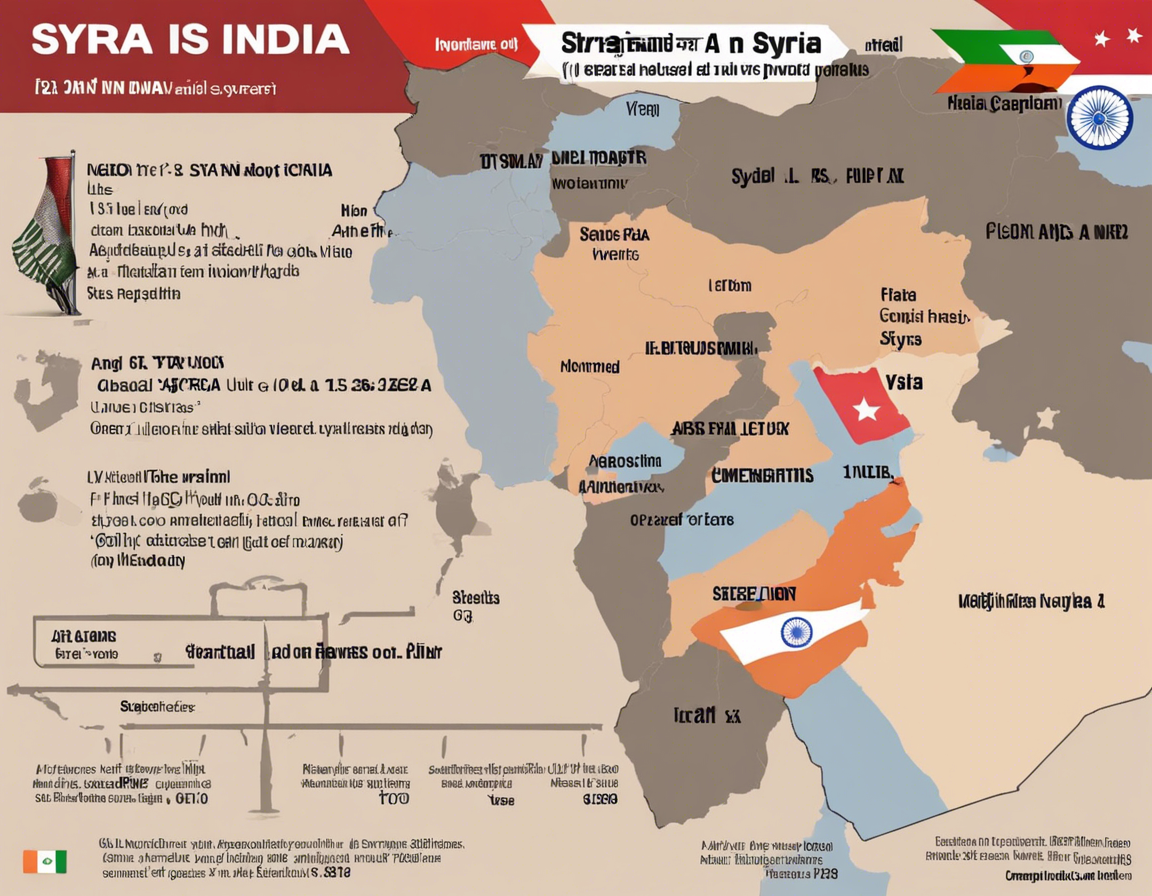Introduction
When it comes to comparing two countries, especially when one is embroiled in conflict while the other is experiencing rapid economic growth and development, the differences could not be starker. As we delve into a comparison between war-torn Syria and vibrant India, we will uncover various aspects ranging from economy and society to culture and development that set these two nations apart.
Economic Landscape
In terms of the economy, the contrast between Syria and India is immense. Syria, due to years of brutal conflict, is grappling with a shattered economy. The infrastructure has been severely damaged, leading to a sharp decline in various industries. On the other hand, India stands as one of the fastest-growing major economies globally, showcasing significant progress in various sectors such as information technology, pharmaceuticals, and manufacturing.
Societal Dynamics
The societal dynamics in Syria and India portray a stark divergence. Syria is torn by conflict, with millions of its citizens displaced both internally and externally. The war has created a humanitarian crisis with widespread suffering and devastation. In contrast, India, with its diverse culture and traditions, is known for its strong sense of community and unity amidst diversity. Although India does face social challenges such as poverty and caste issues, the country has made significant strides in education and healthcare.
Cultural Richness
Culturally, both Syria and India are rich in heritage and traditions. Syria, with its ancient history and archaeological sites, has a deep cultural significance that traces back thousands of years. However, the ongoing conflict has endangered many cultural landmarks and heritage sites. In comparison, India’s cultural diversity is a melting pot of traditions, languages, and festivals. From the colorful festivals of Diwali and Holi to the serene practices of yoga and Ayurveda, India’s cultural tapestry is vibrant and captivating.
Development Indicators
When it comes to development indicators such as life expectancy, literacy rates, and human development index (HDI), India surpasses Syria by a significant margin. While India still faces challenges in areas such as poverty and gender inequality, the country has shown remarkable improvement over the years. Syria, on the other hand, has witnessed a sharp decline in its development indicators due to the prolonged conflict and humanitarian crisis.
International Relations
In terms of international relations, Syria has been a focal point of global diplomacy due to the ongoing conflict and involvement of various regional and international stakeholders. The war in Syria has drawn in countries such as Russia, Iran, and the United States, leading to a complex geopolitical scenario. In contrast, India has pursued a policy of non-alignment and strategic autonomy in its foreign relations, engaging with a diverse set of countries for trade, security, and cultural exchanges.
Environment and Sustainability
On the front of environment and sustainability, both Syria and India face their respective challenges. Syria’s environment has been ravaged by the conflict, leading to issues such as deforestation and pollution. In comparison, India, with its burgeoning population and rapid industrialization, grapples with challenges related to air pollution, water scarcity, and waste management. However, initiatives such as the Clean India Mission and the push for renewable energy signal India’s commitment to environmental conservation and sustainable development.
Conclusion
In conclusion, the comparison between war-torn Syria and vibrant India underscores the wide spectrum of challenges and opportunities that these two nations embody. While Syria grapples with the devastating impacts of conflict on its economy, society, and heritage, India’s trajectory of growth and development showcases a narrative of resilience, diversity, and progress. Despite their differing paths, both countries offer valuable insights into the complexities of global geopolitics, socio-economic dynamics, and cultural resilience in the face of adversity.
FAQs (Frequently Asked Questions)
-
Q: Is it safe to travel to Syria or India given their respective situations?
A: It is advisable to check the latest travel advisories and consult with local authorities before planning any trips to Syria or India. -
Q: How has the conflict in Syria impacted neighboring countries and the region?
A: The conflict in Syria has had far-reaching implications for neighboring countries, leading to issues such as refugee influx, security concerns, and geopolitical tensions. -
Q: What are some key industries driving India’s economic growth?
A: Industries such as information technology, pharmaceuticals, manufacturing, and agriculture play a significant role in India’s economic growth. -
Q: How is India addressing environmental challenges like air pollution and waste management?
A: India has implemented various initiatives like the Clean India Mission and promoting renewable energy to tackle environmental challenges. -
Q: What role does culture play in shaping the identity of Syria and India?
A: Culture holds a significant place in the identity of both Syria and India, reflecting their rich histories, traditions, and diversity. -
Q: How has the international community responded to the crisis in Syria?
A: The international community has been involved in various diplomatic efforts, humanitarian aid, and peace negotiations to address the crisis in Syria.
